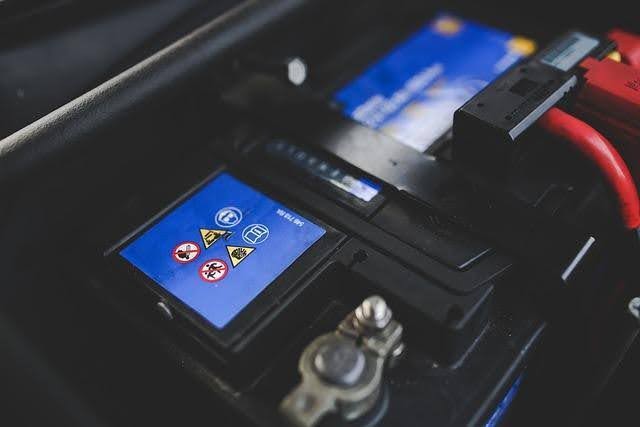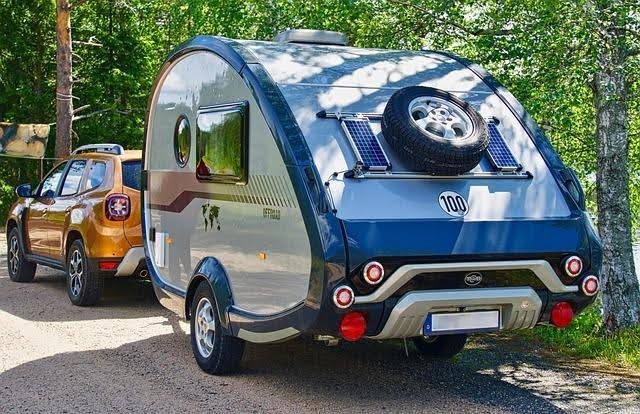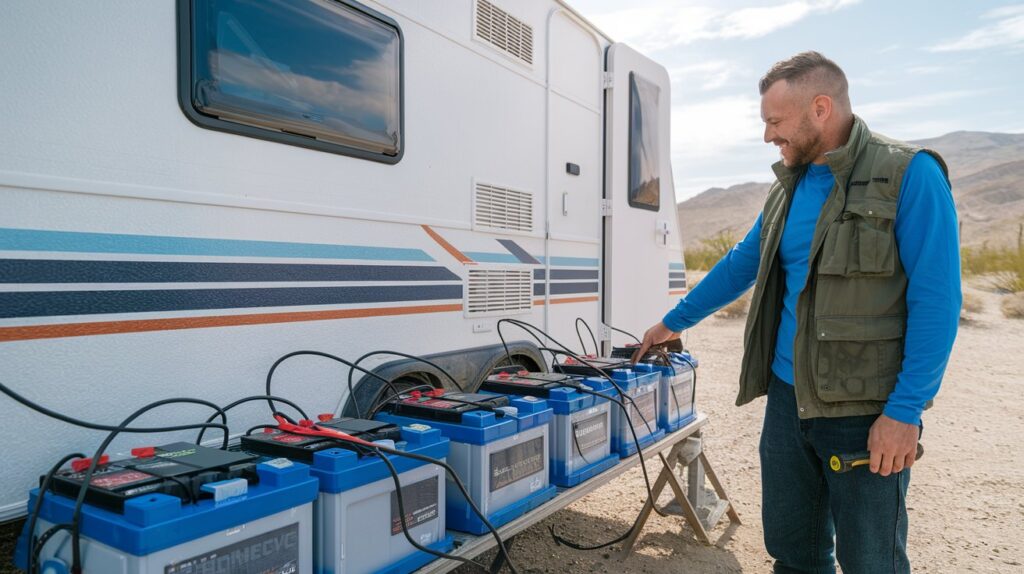Having your caravan battery drain out mid-trip can ruin what could have been a thrilling adventure. Whether you own a static or touring caravan, investing in a quality caravan battery is paramount to enjoy a scintillating camping or road trip.
Besides, it’s prudent to implement the manufacturer’s guidelines on proper battery care and maintenance.
We’ve prepared a definitive guide to caravan batteries, including their applications and how to pick the best product for you.
Read through this insightful piece before planning your next caravan vacation.
What Are Caravan Batteries?
A caravan battery, also known as a leisure battery, is a battery designed for powering caravan appliances.
Leisure batteries may not feature high up on many caravanners’ checklists. But whether you’re planning a day picnic or a month-long vacation, it pays to invest in a premium caravan battery.
A caravan battery can elevate your trip by powering your electrical appliances and equipment. Depending on the season, the battery might be the only thing standing between you and a hot shower or cold drink.
When Are Caravan Batteries Ideal?

Certain holiday parks and campgrounds are connected to the national electricity grid, providing campers a steady power supply through the 240-volt system. However, these benefits mostly favor static caravanners.
While you can stop by a holiday park in your touring caravan and hook your fridge to the mains electricity, you’ll only enjoy such perks for the few hours you’re camping there. Besides, the most scenic holiday parks are generally situated in off-grid locations, making it challenging even for static caravanners to enjoy uninterrupted access to electricity.
Buying a leisure battery is the only way to address these inconveniences.
It doesn’t matter if you plan to camp at a powered or non-powered holiday park; a caravan battery lets you keep your crucial electrical appliances plugged and running. For touring caravanners, a leisure battery might also help you recharge your vehicle’s house battery.
What Appliances Might You Power With A Leisure Battery?
Leisure batteries are designed to power a caravan’s 12-volt system for fairly extended periods of time. These include the lights, entertainment systems (like television and radios), and essential electrical appliances like the fridge and water pump.
Obviously, you can also use the battery for lighter-duty applications, such as phone recharging.
However, plugging additional heavy-duty equipment into your leisure battery can diminish its cycle and overall longevity. Besides, certain appliances may require an inverter to connect to the battery.
Types of Leisure Batteries
1. Lead Acid Batteries
Lead acid batteries come in two types: Gel and Absorbent Glass Mat (AGM).
Gel batteries are beloved for their better leak protection. They’re named for the jelly-like appearance of their electrolytes, which prevents leakage. Although traditionally synonymous with jet skis and quad bikes, gel batteries have also found their way into caravans.
AGM batteries have their electrolytes contained in glass mat-like separators. These batteries boast a longer lifespan and run cycles than their gel counterparts.
Regarding seasonal suitability, gel lead acid batteries are excellent if vacationing in warmer temperatures, while AGMs deliver in all weather conditions.
Collectively, lead acid batteries have a discharge depth of around half of their full charge capacity. In other words, a 400 Amp-hour battery contains 200 usable amp hours. This information is critical in planning your caravan’s charging schedule.
2. Lithium Ion Batteries

Lithium ion batteries have garnered considerable popularity among caravanners due to their superior durability and charge cycles.
Lithium ion leisure batteries have a remarkable 80% discharge depth. Using the above illustration, a 400-Amp-hour Li-ion battery provides 320 usable amp hours.
Besides, lithium ion leisure batteries are relatively compact and lightweight, often taking up half the footprint compared to their lead-acid counterparts. For perspective, a 200 Amp-hour lead acid caravan battery can weigh up to 50 kilograms.
Lithium ion caravan batteries also outsell lead-acid batteries in their faster recharge and slower discharge time.
Other Considerations While Shopping For Leisure Batteries
1. Brand
Numerous companies manufacture caravan batteries. However, it’s prudent to pick a brand with a record of excellence.
Sample online reviews to learn more about a leisure battery manufacturer before choosing their products. Some noteworthy brands to explore include;
Baintech
BMPRO
Renogy
Power AGM
Invicta
Projecta
Camec
Victron
Giantz
Enerdrive
Century
Note that certain brands specialize in specific battery types, whereas others manufacture both lithium and lead-acid batteries.
2. Battery Size and Weight
Many caravans come with pre-designed battery compartments. Getting a battery that will fit comfortably in the provided space is essential. An oversized leisure battery won’t fit in, while an undersized one may be tossed back and forth as you cruise.
Consider a leisure battery’s net weight before adding it to your caravan. Whether it’s the heavier lead-acid or the more lightweight lithium-ion battery, look for something that won’t push your caravan’s towing limit.
3. Securing Mechanisms

How a leisure battery secures your caravan is another crucial factor when shopping for these power storage accessories.
While some caravan batteries are secure using L-shaped clips or brackets, others may require a bolt.
Final Thoughts
A leisure battery is an essential caravan accessory, providing the power to maintain electronic appliances.
However, caravan batteries have their limitations. Proper care and maintenance are necessary to optimize their efficiency. More importantly, conduct extensive research while choosing the correct leisure battery for your traveling needs.
We hope this post provided you with the insights you need on caravan batteries ahead of your upcoming trip.

